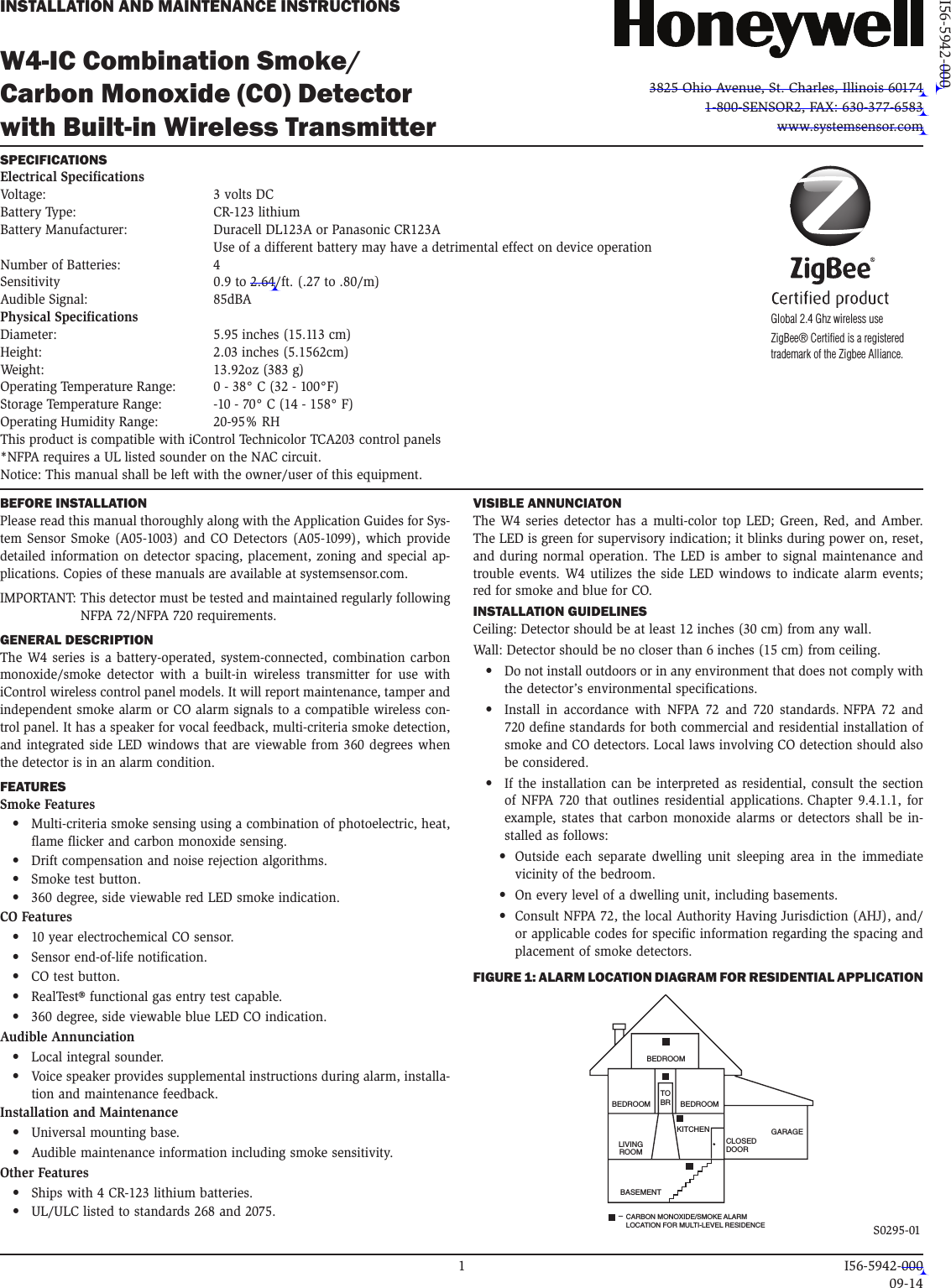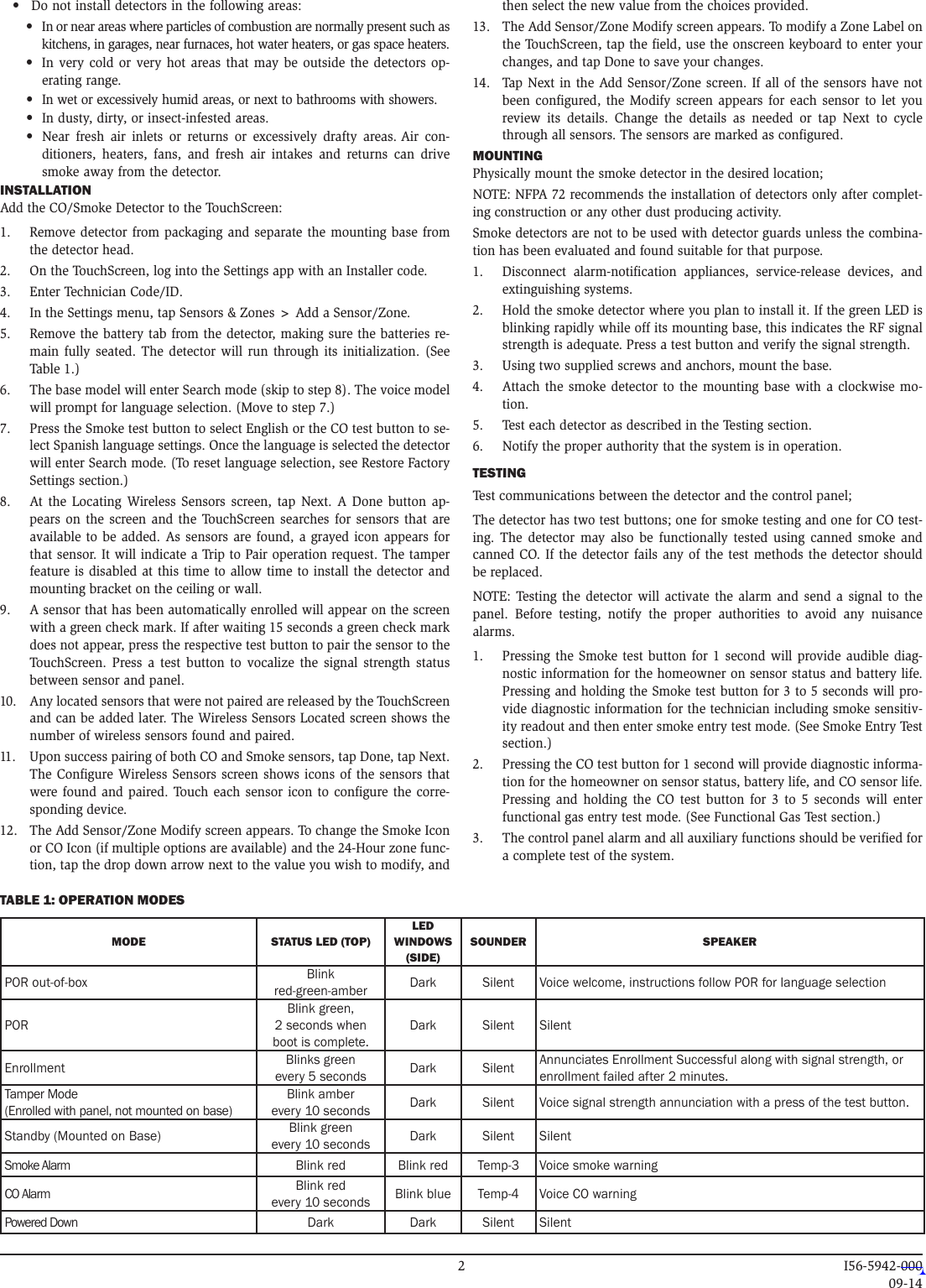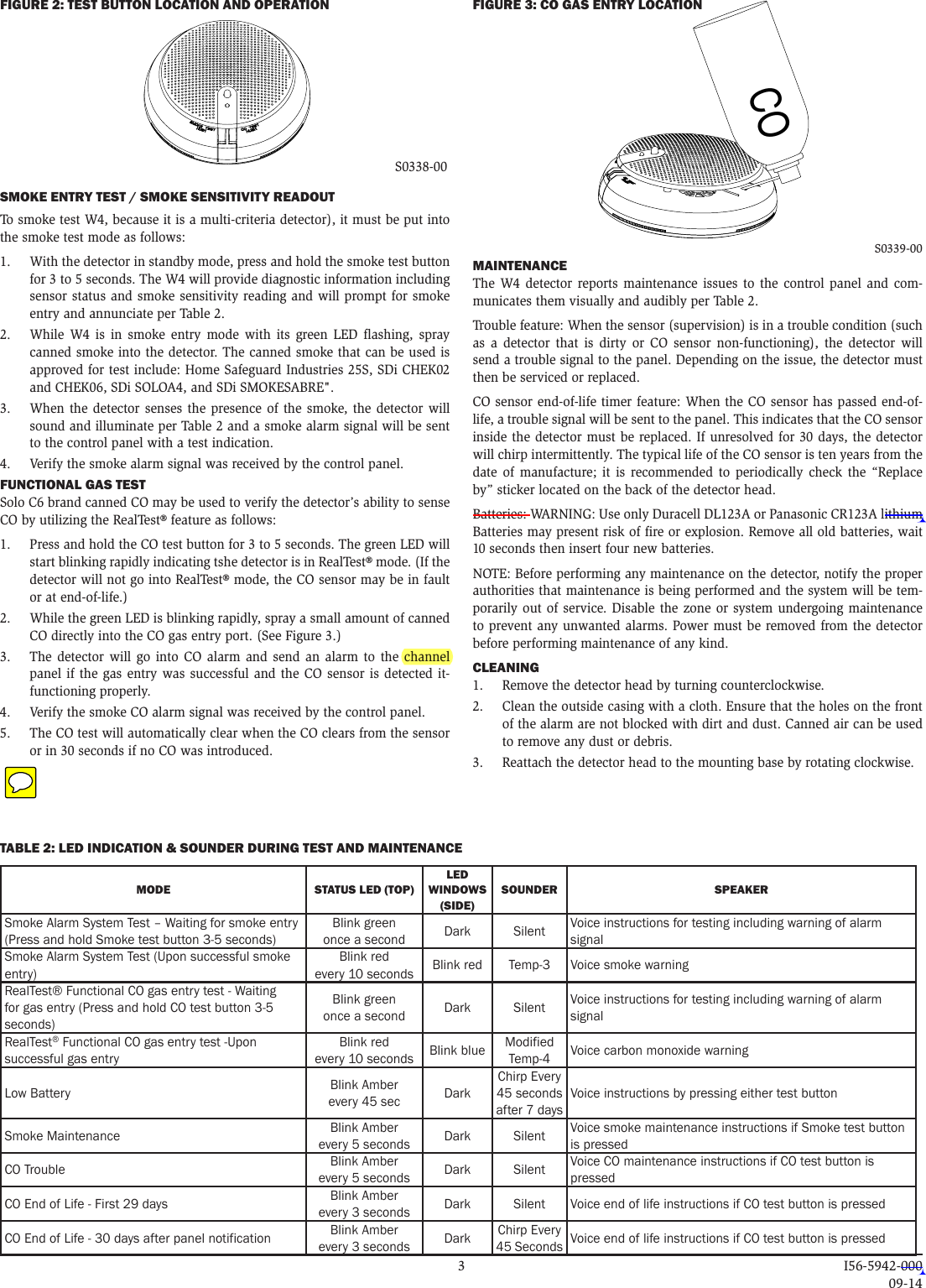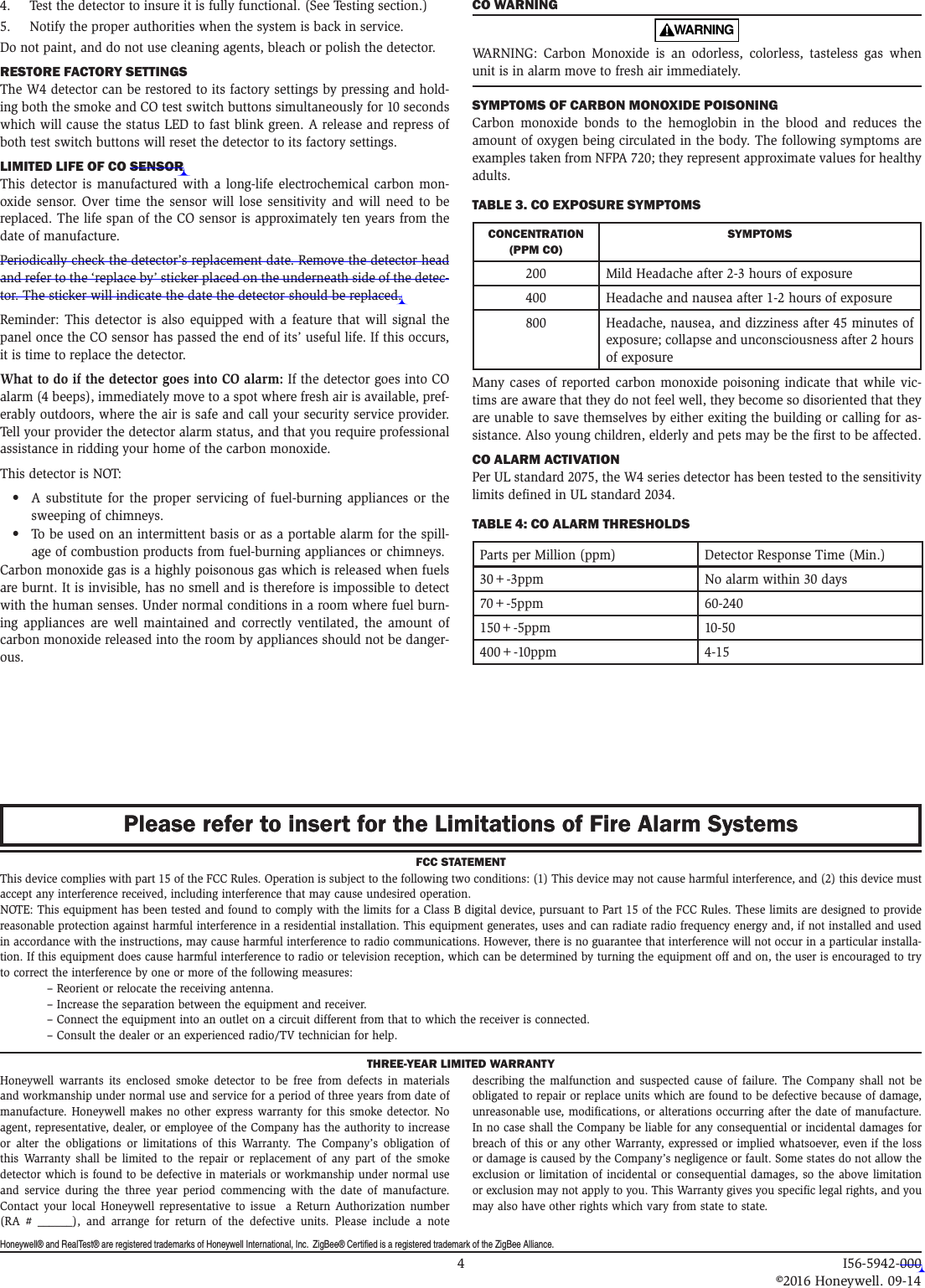Honeywell W4ICCOMBO Wireless Smoke / Carbon Monoxide (CO) Detector User Manual Exhibit D Users Manual per 2 1033 b3
Honeywell International Inc. Wireless Smoke / Carbon Monoxide (CO) Detector Exhibit D Users Manual per 2 1033 b3
Exhibit D Users Manual per 2 1033 b3



